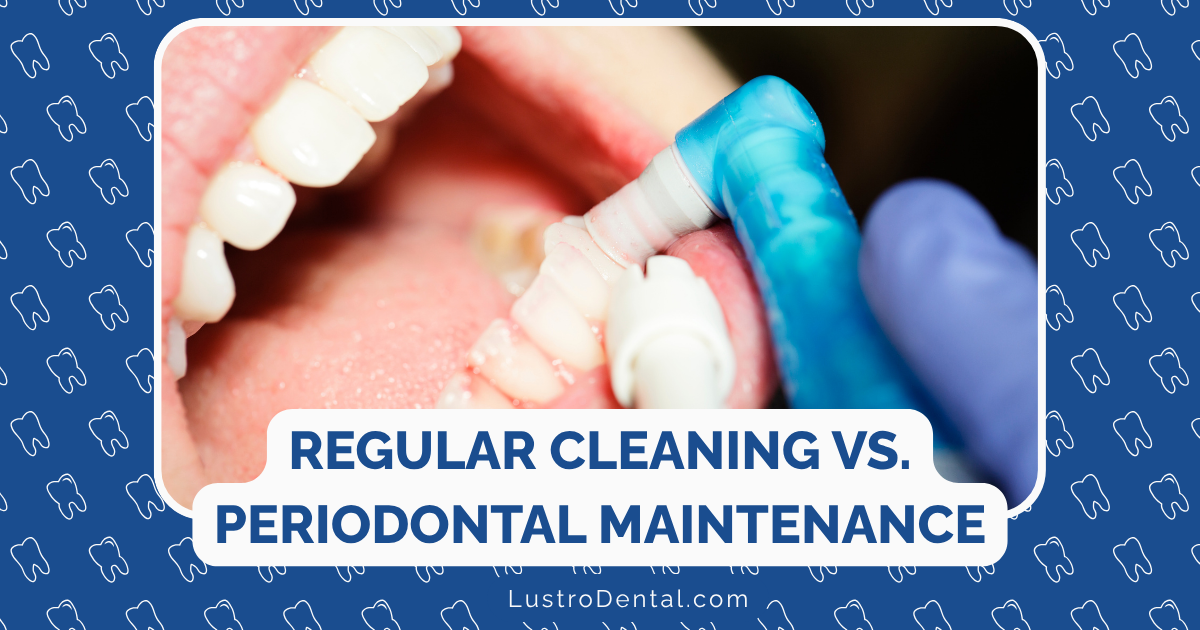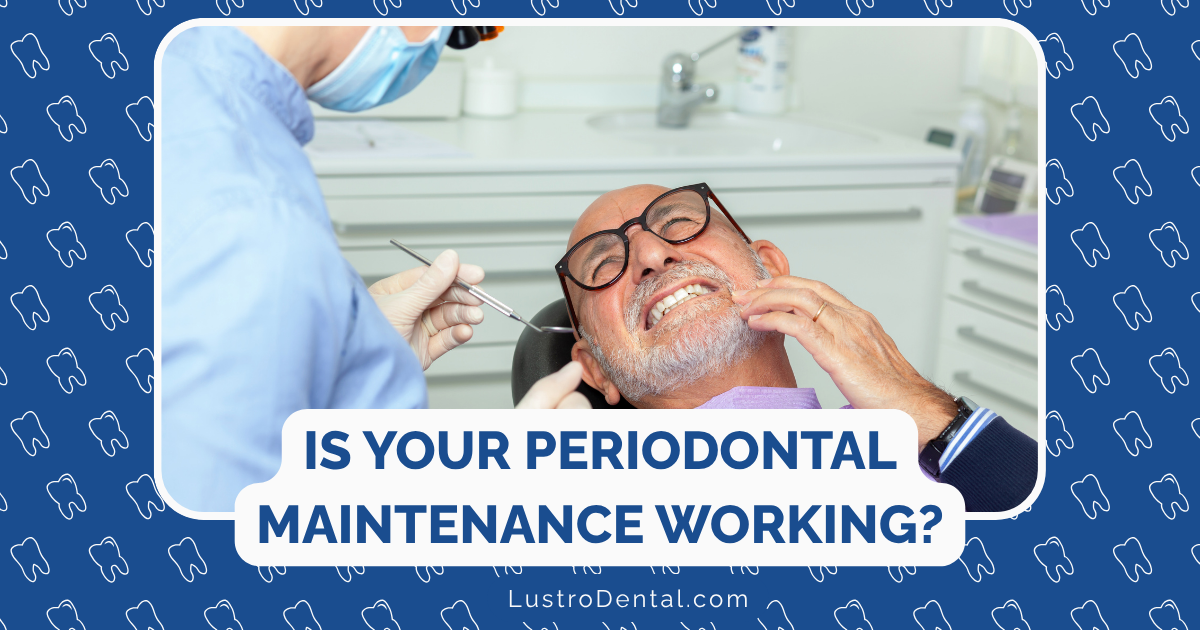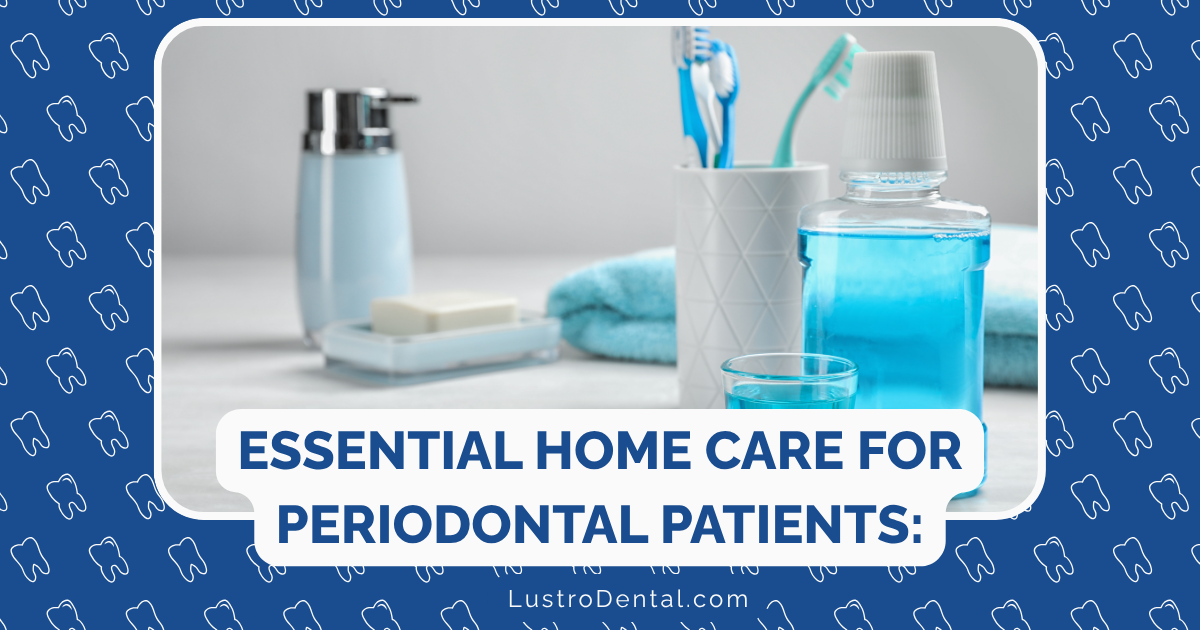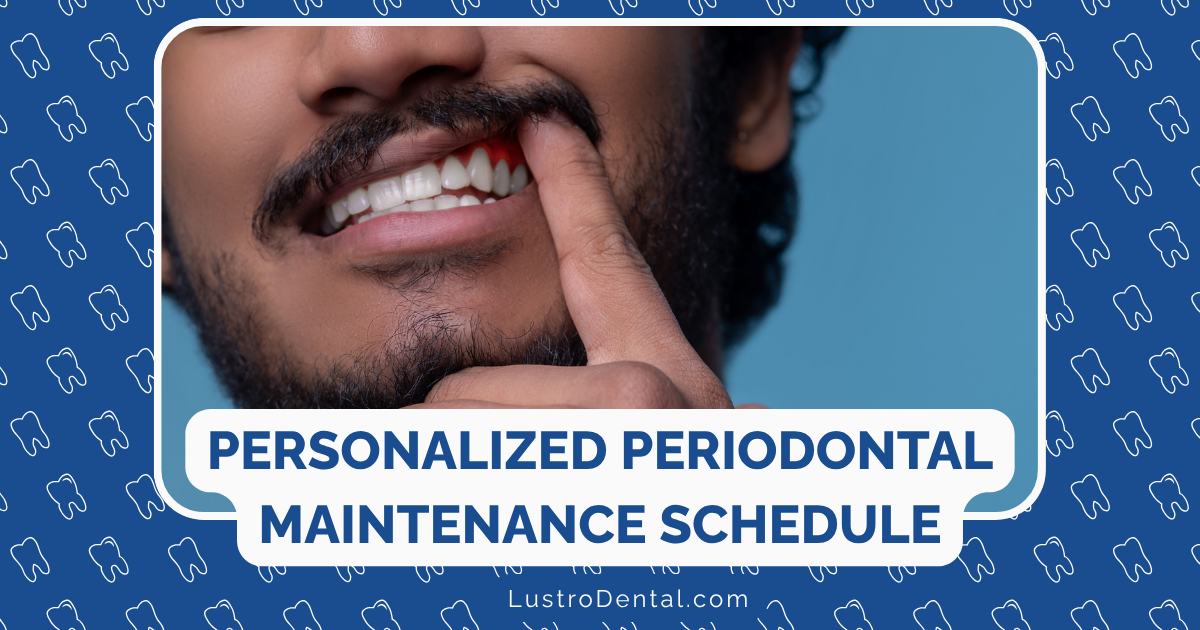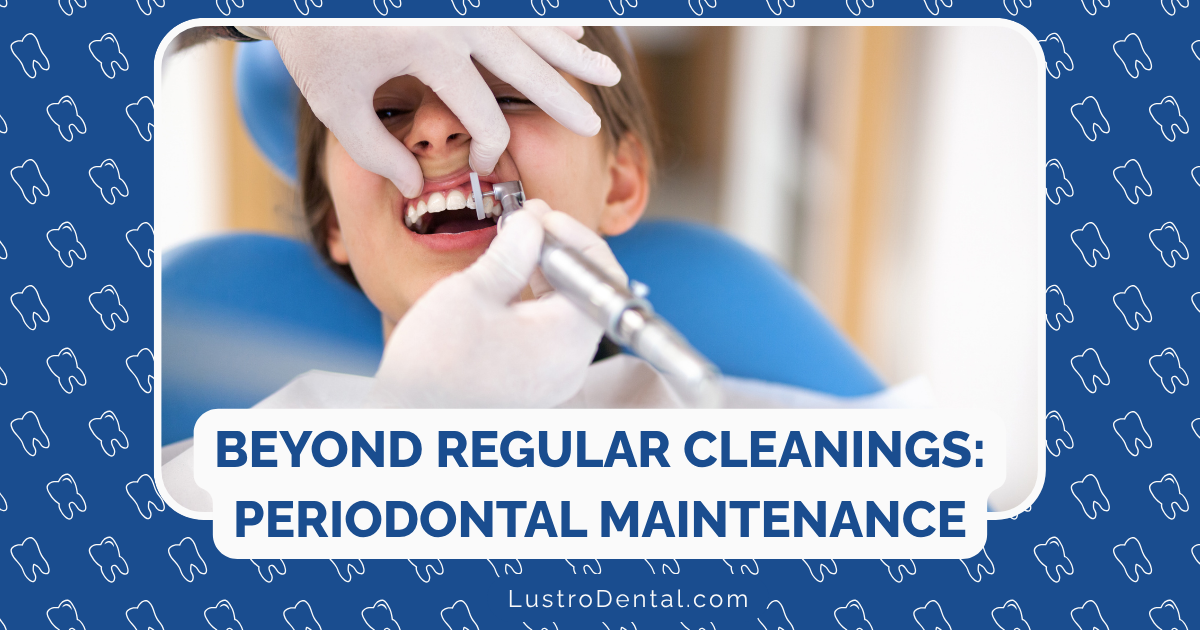Genetic Risk Factors for Gum Disease: What to Do If It Runs in Your Family

When patients ask me about their risk for periodontal (gum) disease, one of the first questions I ask is about their family history. While many people understand that conditions like heart disease and diabetes can run in families, fewer realize that our genes also play a significant role in determining our susceptibility to gum disease.
In fact, research suggests that genetics may account for up to 30-50% of your risk for developing periodontal disease. This genetic component helps explain why some people with excellent oral hygiene habits still struggle with gum problems, while others with less diligent care seem to avoid serious issues.
If you’ve noticed that multiple family members have experienced gum disease, tooth loss, or frequent dental problems, you may have inherited a genetic predisposition. But here’s the good news: understanding your genetic risk factors empowers you to take proactive steps that can significantly reduce your chances of developing severe periodontal disease.
Understanding the Genetic Link to Periodontal Disease
Periodontal disease is a complex, multifactorial condition that results from the interaction between bacteria in dental plaque and your body’s immune response. According to the American Dental Association, the heritability of periodontal disease ranges from approximately 30% to 50%, with this percentage increasing with disease severity.
Several specific genetic factors have been identified that can increase your risk:
1. Immune Response Genes
Variations in genes that regulate your immune system can significantly impact how your body responds to the bacteria that cause gum disease. For example:
- Interleukin-1 (IL-1) gene variations: These can lead to an exaggerated inflammatory response to relatively small amounts of plaque. People with certain IL-1 gene variations produce up to four times more inflammation when their gums encounter bacteria.
- Interleukin-6 (IL-6) and Tumor Necrosis Factor-alpha (TNF-α): Variations in these genes can also affect inflammation levels and tissue destruction in the gums.
- Vitamin D Receptor (VDR) gene: Certain variations affect bone metabolism and immune function, potentially increasing susceptibility to bone loss in periodontal disease.
2. Connective Tissue Genes
Your gums are made of connective tissue, and genetic variations affecting collagen production can impact the integrity and strength of these tissues:
- Collagen genes: Mutations in genes responsible for collagen production can lead to weaker gum tissue that’s more susceptible to breakdown.
- Ehlers-Danlos syndrome: This hereditary condition affects connective tissues and is associated with increased periodontal disease risk.
3. Aggressive Periodontitis Genes
Certain genetic variations are specifically linked to aggressive periodontitis, a severe form that:
- Develops at a younger age (often in teens or early 20s)
- Progresses rapidly
- Can lead to significant tooth loss if not treated early
- Has a strong familial pattern
According to a study published in the Journal of Periodontology, specific gene variations related to interleukin-10 (IL-10) have been associated with an increased risk of aggressive periodontitis.
4. Microbiome Influence
Interestingly, your genes can even affect which bacteria colonize your mouth:
- Research suggests that genetic factors influence the composition of your oral microbiome, potentially creating an environment more conducive to harmful bacteria.
- These genetic influences on your microbiome begin in early life and can persist throughout adulthood.
Warning Signs: How to Tell If You’re at Genetic Risk
While genetic testing for periodontal disease is becoming more available, there are several indicators that can suggest a genetic predisposition:
Family History Patterns
- Multiple family members with early tooth loss (before age 35)
- Parents or siblings who required extensive gum treatments or who wear dentures at a relatively young age
- Family history of aggressive periodontitis or early-onset periodontitis
Your Dental History
- Gum inflammation despite good oral hygiene
- Rapid progression of gum disease
- Early onset of periodontal problems (teens or 20s)
- Disproportionate bone loss compared to the amount of plaque present
Response to Treatment
- Poor response to standard periodontal treatments
- Recurrent gum disease despite maintenance therapy
- Unpredictable patterns of disease progression
The Gene-Environment Interaction: It’s Not Just Your Genes
While genetics plays a significant role, it’s important to understand that periodontal disease results from the interaction between your genetic predisposition and environmental factors. According to the American Academy of Periodontology, several modifiable risk factors can significantly influence whether your genetic predisposition manifests as active disease:
Modifiable Risk Factors
- Tobacco use: Smoking increases the risk of periodontal disease by 5-20 times and is considered one of the most significant risk factors.
- Poor oral hygiene: Inadequate plaque removal allows bacteria to flourish, triggering the inflammatory response.
- Diabetes: Uncontrolled diabetes impairs immune function and healing, exacerbating gum disease.
- Stress: Chronic stress can weaken immune function and increase inflammation throughout the body.
- Certain medications: Some medications can affect gum health by reducing saliva flow or causing gum overgrowth.
- Poor nutrition: Deficiencies in essential nutrients can compromise immune function and tissue repair.
- Teeth grinding/clenching: Excessive force on periodontal tissues can accelerate destruction.
The good news is that these environmental factors are largely within your control. Even with a strong genetic predisposition, managing these factors can significantly reduce your risk of developing severe periodontal disease.
Personalized Prevention Strategies for Those with Genetic Risk
If gum disease runs in your family, a proactive, personalized approach to prevention is essential. Here’s a comprehensive strategy based on the latest research:
1. Enhanced Professional Care
Increased Frequency of Dental Visits
For those with genetic risk factors, the standard twice-yearly dental visits may not be sufficient. According to the Cleveland Clinic, individuals with genetic predispositions often benefit from more frequent professional care:
- Consider dental check-ups and cleanings every 3-4 months instead of every 6 months
- These more frequent visits allow for earlier intervention if signs of disease appear
- Professional cleanings remove plaque and calculus that even the most diligent home care might miss
Advanced Screening Techniques
Work with a dentist or periodontist who offers:
- Comprehensive periodontal examinations, including detailed pocket depth measurements
- Digital imaging to track bone levels over time
- Genetic testing for periodontal disease susceptibility when available
- Microbiological testing to identify specific pathogens
Personalized Treatment Planning
A 2024 study published in the Journal of Pharmaceutical and Biomedical Sciences found that personalized treatment approaches based on genetic screening, lifestyle factors, and clinical presentation resulted in significantly better outcomes than standardized approaches:
- Patients who received personalized treatment showed greater reductions in probing depth (2.6 mm vs. 1.8 mm)
- They also experienced greater gains in clinical attachment (1.9 mm vs. 1.2 mm)
- Bleeding on probing was reduced by 45% in the personalized treatment group compared to 30% in the standard treatment group
2. Advanced Home Care Protocols
Optimize Your Daily Oral Hygiene Routine
Basic oral hygiene practices are essential but may not be sufficient for those with genetic risk. Consider these enhanced techniques:
- Electric toothbrush: Studies consistently show that electric toothbrushes remove more plaque than manual brushing. Look for models with pressure sensors to prevent excessive force.
- Interdental cleaning: While flossing is important, those with genetic risk may benefit from additional tools:
- Interdental brushes for larger spaces
- Water flossers, which can reduce bleeding and gingivitis more effectively than string floss alone
- Floss picks or holders if dexterity is an issue
- Antimicrobial mouth rinses: Products containing chlorhexidine gluconate or essential oils can help reduce bacterial load. Your dentist may recommend prescription-strength options.
- Tongue cleaning: Removing bacteria from the tongue surface reduces the overall bacterial load in the mouth.
Consider Adjunctive Products
- Oral probiotics: Emerging research suggests that certain probiotic strains may help balance the oral microbiome and reduce inflammation.
- High-dose enzyme-suppression toothpastes: These can help control the body’s inflammatory response to bacteria.
- Hydroxyapatite toothpastes: May help remineralize enamel and reduce sensitivity without fluoride.
3. Lifestyle Modifications
Nutrition for Gum Health
- Anti-inflammatory diet: Focus on foods rich in omega-3 fatty acids, antioxidants, and essential nutrients.
- Vitamin C: Essential for collagen production and tissue healing. Aim for 75-90 mg daily from citrus fruits, berries, and vegetables.
- Vitamin D and calcium: Important for bone health, including the alveolar bone that supports your teeth.
- Coenzyme Q10: Some studies suggest this antioxidant may help reduce gum inflammation.
If you smoke, quitting is perhaps the single most important step you can take to reduce your risk of periodontal disease. According to the National Library of Medicine, smoking increases the risk of developing periodontal diseases by 5-20 times and is associated with:
- Greater levels of bone loss
- Deeper periodontal pockets
- More attachment loss
- Reduced effectiveness of periodontal treatment
Stress Management
Chronic stress can impair immune function and increase inflammation. Consider incorporating:
- Regular physical activity
- Meditation or mindfulness practices
- Adequate sleep (7-8 hours nightly)
- Stress-reduction techniques like deep breathing or yoga
4. Management of Related Health Conditions
Diabetes Control
If you have diabetes, maintaining good glycemic control is crucial for gum health:
- Monitor your blood sugar regularly
- Follow your physician’s recommendations for diet, exercise, and medication
- Inform your dentist about your diabetes status
Medication Review
Some medications can affect gum health. Discuss with your healthcare provider:
- Medications that cause dry mouth (xerostomia)
- Calcium channel blockers, which can cause gum overgrowth
- Immunosuppressive drugs that may affect your body’s ability to fight infection
The Future of Genetic-Based Periodontal Care
The field of periodontal genetics is rapidly evolving, with several promising developments on the horizon:
Genetic Testing for Periodontal Disease
While not yet standard practice, genetic testing for periodontal disease susceptibility is becoming more accessible. According to Dr. Scharf’s Periodontal Blog, these tests can:
- Identify specific genetic markers associated with increased disease risk
- Help develop more personalized prevention and treatment strategies
- Potentially motivate higher-risk patients to adhere to prevention protocols
Targeted Therapies Based on Genetic Profile
Research is ongoing into treatments that address specific genetic variations:
- Host-modulation therapies: Medications that can regulate the immune response in genetically susceptible individuals
- Personalized antimicrobial approaches: Targeted antibiotics based on your specific oral microbiome
- Gene therapy: Still experimental, but showing promise for correcting genetic defects that contribute to periodontal disease
Regenerative Approaches
For those who have already experienced tissue loss due to genetically influenced periodontal disease:
- Stem cell therapy: Using stem cells to regenerate lost gum and bone tissue
- Growth factors: Proteins that stimulate tissue regeneration
- Tissue engineering: Creating scaffolds that guide the body’s natural healing process
Success Stories: Managing Genetic Predisposition Effectively
While genetic risk factors can’t be changed, many patients with family histories of periodontal disease have successfully maintained healthy gums through diligent care:
Case Study: Sarah’s Story
Sarah, 35, had watched both her parents lose their teeth to gum disease by age 50. Concerned about her own genetic risk, she:
- Began more frequent dental visits (every 3 months)
- Invested in a high-quality electric toothbrush and water flosser
- Used prescription-strength antimicrobial rinse
- Quit smoking and improved her diet
- Managed her stress through regular exercise
Despite having early signs of gum inflammation in her 20s, Sarah has maintained healthy gums and all her natural teeth through her proactive approach.
Case Study: Michael’s Experience
Michael, 42, was diagnosed with aggressive periodontitis at age 25, despite good oral hygiene. After learning about his genetic predisposition, he:
- Underwent genetic testing to identify specific risk markers
- Received targeted antibiotic therapy based on microbiome analysis
- Committed to a rigorous home care routine
- Maintained quarterly professional cleanings
- Addressed his diabetes with improved diet and medication
While he experienced some bone loss before diagnosis, Michael has successfully halted disease progression for over 15 years through personalized care.
Conclusion: Empowerment Through Knowledge
Having a genetic predisposition to gum disease doesn’t mean you’re destined to lose your teeth. In fact, understanding your genetic risk can be empowering, allowing you to take proactive steps that can significantly alter your dental destiny.
By combining enhanced professional care, advanced home hygiene practices, healthy lifestyle choices, and emerging genetic-based approaches, you can effectively manage your risk and maintain healthy gums throughout your life—regardless of your family history.
If you suspect you may have a genetic predisposition to periodontal disease, discuss your concerns with your dentist or consider consulting with a periodontist who can help develop a personalized prevention and treatment plan tailored to your specific risk profile.
Remember, when it comes to genetic risk for gum disease, knowledge truly is power—and proactive care is your best defense.
Have you noticed periodontal disease running in your family? Share your thoughts in the comments below.


